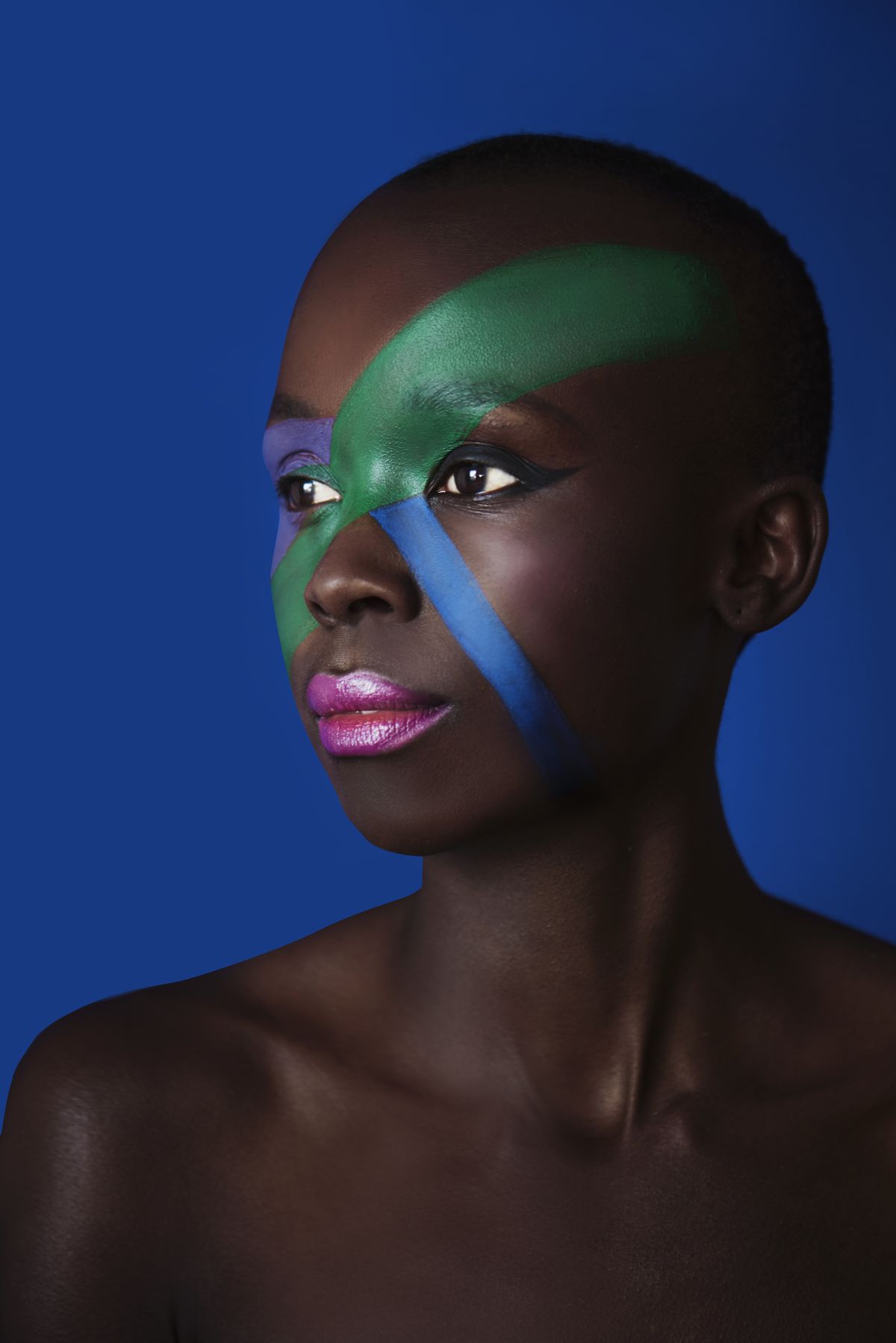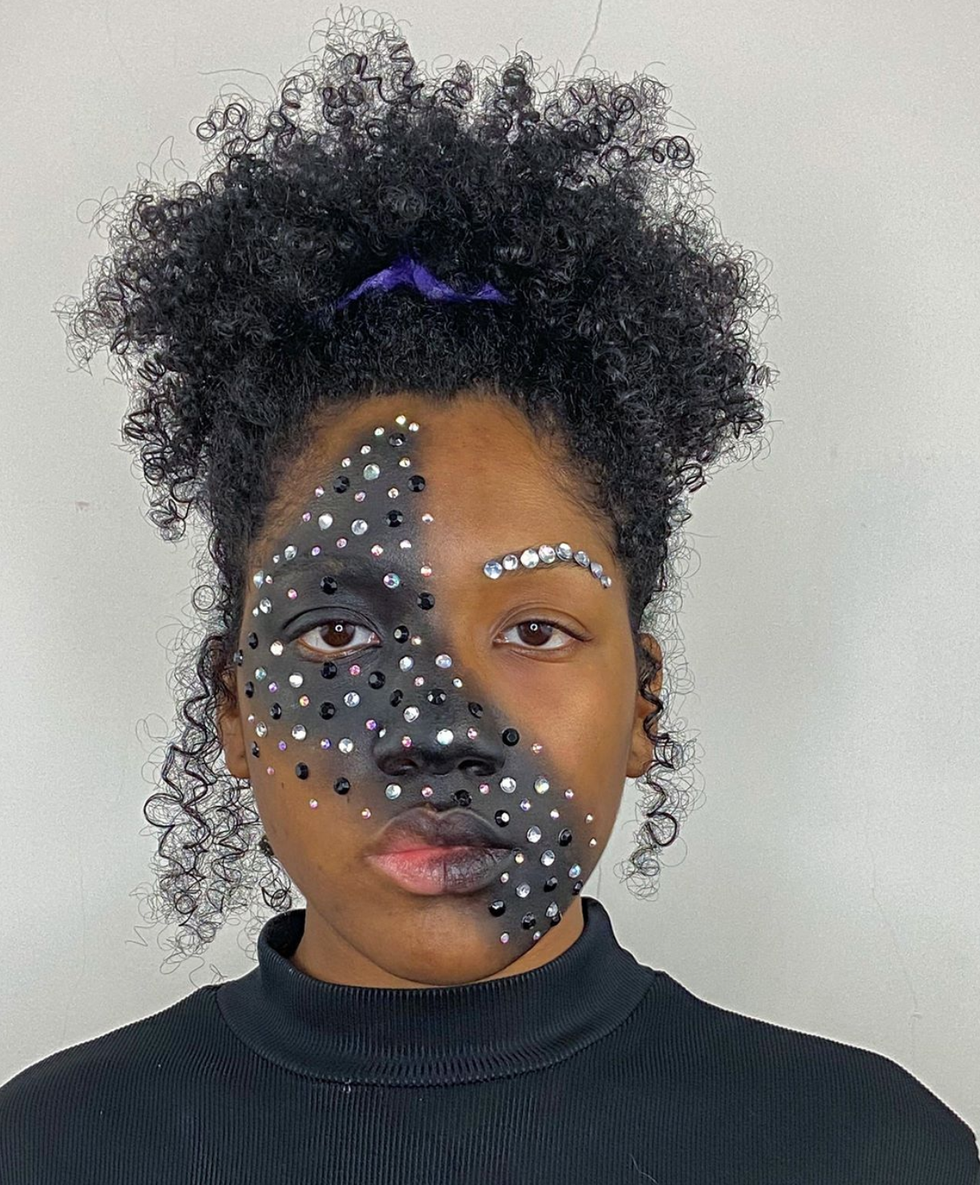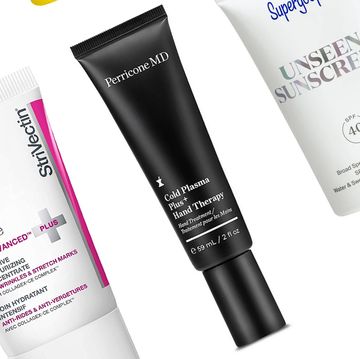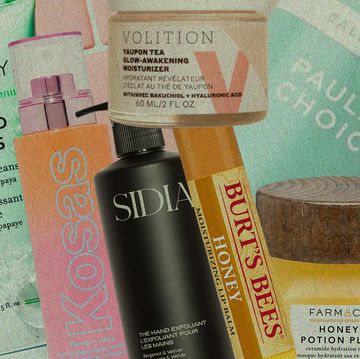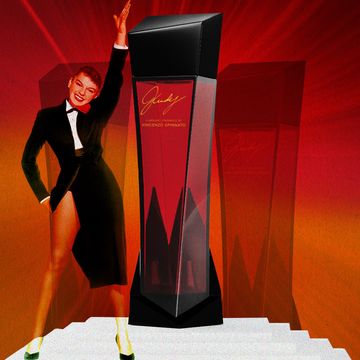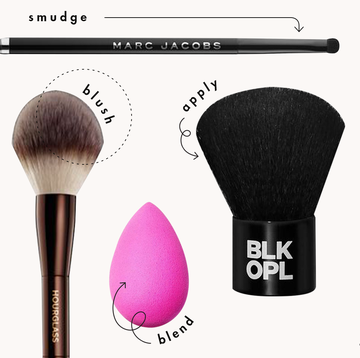Makeup artist Amaal Singh was scrolling through Reddit forums about activism and protests when he first came across the concept of avoiding face detection technology through makeup.
Known as CV Dazzle (Computer Vision Dazzle), the term was invented in 2010 by artist Adam Harvey and focuses on face paint and traditional makeup being used in abstract ways to obscure facial features from being identified by computers and surveillance machines. Harvey took inspiration from a technique used by Norman Wilkinson, who developed a camouflage strategy for military ships to be covered in bold splashes of patterns and stripes during World War I, which helped to not only conceal the speed at which ships were traveling, but also the size and shape of them.
Though CV Dazzle has been trending for some time now, it's faced a certain re-emergence since mass Black Lives Matter protests took hold in the summer 2020, with protesters using designs to eschew technology, in turn preventing them from being identified.
Experimenting with CV Dazzle
"I've tried wigs, color blocking, prosthetics, like having a second nose..but that's also not very comfortable and rhinestones at various points on my face," explains Singh of his surveillance-defying technology, which he has been using during Black Lives Matter protests. "I've also done various designs and things such as zebra, tiger print, or cow print on my face. I'm still honestly exploring what would work best because, the hard part about using makeup outdoors in the heat while protesting is it doesn't last very long and can get uncomfortable so, I'm trying to find ways to be comfortable and make it last long."
According to Harvey, the main thing about getting CV Dazzle to work correctly is by focusing on makeup that doesn't just enhance a person's looks, but also using colors that don't normally match their natural skin tone. He also suggests obscuring the nose bridge, eyes, head, and avoiding asymmetry.
Martayla, who has been one of the most popular creators experimenting with CV Dazzle on Instagram has used everything from studs and sequins to glitter and Cubist-like painting to try to test the results. She often documents which ones work (by trying to unlock her phone, for example, or testing face filters on Instagram) on social media.
"I've had a few people at protests approach me and ask me why I had done that to my face, and when I told them they were pretty shook," says Singh of his recent adventures in CV Dazzle. He also tests the accuracy of each look on his phone. "Snapchat and Instagram filters also use face detection," he says. "Maybe not as accurately as law enforcement, but usually if I can fool a Snapchat or Instagram filter well enough then I know I've done it correctly."
Makeup as a political statement
Others have been using CV Dazzle to make a political statement about the way we're constantly under surveillance, both in protests and otherwise. In August 2019, the Dazzle Club, an ongoing collaboration between artist-run organization AiR and artist duo Yoke Collective, was formed. Its members lead public walks wearing CV Dazzle.
"It began in response to the forced admission that facial recognition technology was being used by Argent on the King's Cross Estate in London, a place in which we have been researching publicness, some of us for over a decade," explains Dazzle Club member Georgina Rowlands. "As citizens of a heavily surveilled city, we see our role as artists to draw wider attention to concerns about surveillance technologies and develop a participatory community of creative resistance."
Beyond that, French West Indies artist Makakri has also been incorporating the technique into her work. She seeks to question our relationship with movement, spaces and perceptions with visual or sensory tools. "In 2015, when I discovered the equipment at Heathrow Airport in England — automated border control systems — I first started learning about CV Dazzle," she says. "The experience intrigued me a lot and I started to do research on facial recognition."
Makakri's latest work is a self-portrait using CV Dazzle.
"Isn't it ironic that such a sophisticated, ever-evolving technology can be 'hacked' by such an archaic method as makeup?" she says. "Human societies have always used makeup in many ways — for spiritual rituals, to scare the enemy, to celebrate birth or for merely aesthetics purposes. Are we creating a new anti-digital tribe? I find this idea very exciting."
Using the concept in real life
As for whether or not CV Dazzle is actually effective, founder Harvey has some thoughts.
"'Does it work?' is a common question, but needs to be reformatted," he writes on his website. "CV Dazzle is neither a product nor a pattern. CV Dazzle is a concept and a strategy: You can appear recognizable to people but unrecognizable to machines, existing in a dual state of perception. A more helpful question to ask would be 'does design X work against algorithm Y?'"
"We are living in an environment that has access to a wide range of technologies, existing in different versions, qualities and locations; what might work for one might not work for another," says Rowlands. "Sometimes the makeup does work, sometimes not. We are also aware that a design that works one day might not work the next, and that at some point the algorithm will learn a face that is trying not to be recognized. Bringing awareness to the subject and creating a platform for discussion is important to us."
Likewise, John Magee, associate professor of computer science at Clark University in Worcester, Massachusetts says that the sophisticated systems of face detection are changing daily.
"Computer Vision is a rapidly evolving field, where most modern techniques rely on machine learning algorithms," he says. "CV Dazzle likely worked quite well against face detection and recognition systems from a few years ago. In essence, those systems were mostly focusing on improving their ability to deal with a 'typical' looking face. CV Dazzle uses what's called an 'adversarial attack' to fool such systems by presenting the face appearance in a non-typical fashion, the algorithms would have a hard time recognizing that a face was even there. "
For anyone who's interested in experimenting with makeup as an anti-surveillance resource, however, Harvey's website has become a vital resource, but so has social media, where users are sharing their tips and experiments.
"Do your research so that you can know what techniques are best to use and how to effectively do it," adds Singh. "Be creative and have fun! I always use makeup to express myself so my CV Dazzle looks are no exception."
Kristen Bateman is a writer and creative consultant based in New York. She writes about the intersection of culture, fashion, beauty. Her work has been published in Vogue, New York Times Styles/T Magazine, Dazed, New York Magazine, W, Allure, CNN Style and many more. She studied at Parsons School of Design and Central Saint Martins. In her free time, she loves to shop, travel to unusual destinations and test new beauty products. Follow her on Instagram and Twitter @KristenVBateman.
Get Shondaland directly in your inbox: SUBSCRIBE TODAY
